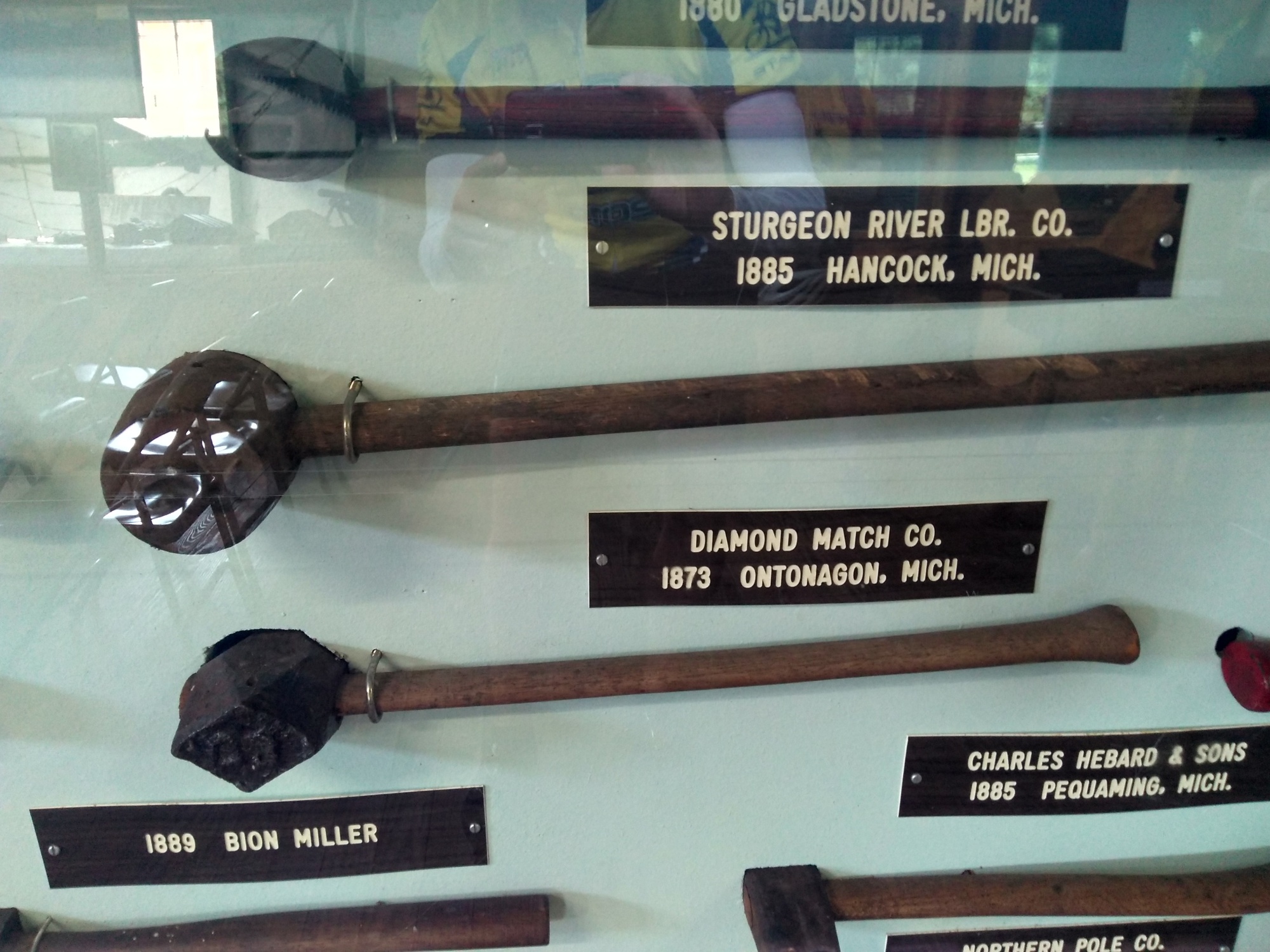Putting their seal on it.
We have put iron mining country behind us. Today we were in logging country. The peak for Michigan logging was from around 1880 - 1920. Surprisingly, the first trees the loggers went after in virgin old growth forests were not hardwoods. The first trees to be cut were white pines.
Only after the valuable pines had been cut did the loggers take out the hardwoods. Then they simply left the stumps, tree tops and discarded branches behind. Once this mess dried out, catastrophic fires followed.
The logging companies stopped paying taxes on the land they had clear-cut, so land ownership went back to the state of Michigan. Gradually the state figured out that they should replant trees to improve the land. During the depression, the Civilian Conservation Corps (CCC) did a little of work restoring and improving forests. Today there is sustainable logging of the second growth forests.
Back in the old days, lumberjacks would use teams of horsed to drag trees to river banks on sleds during the winter. Road crews would go out at night and pour water into the sled tracks to maintain the ice in the tracks. In the spring, the trees were floated down the rivers to saw mills.
But what happened when multiple lumber companies were floating logs down the same stream? Who's logs were who's? Just like ranchers brand cattle to assert their ownership, lumber companies would use heavy hammers to stamp their ID on the end of logs.

| Heart | 0 | Comment | 0 | Link |
Cutting down a tree, trimming the branches and dragging it to a river was hard work. After company A did that hard work, I have to believe it would have been tempting for company B to cut off the end of a log (removing company A's stamp), and then put their own company B stamp on the log. I suspect their were stiff penalties for anyone caught log-russling.

| Heart | 0 | Comment | 0 | Link |

| Heart | 0 | Comment | 0 | Link |

| Heart | 0 | Comment | 0 | Link |
Our first 30 miles this morning were flat and straight as a ruler. We were following railroad tracks.

| Heart | 0 | Comment | 0 | Link |
The long, flat, straight road left us longing for some excitement. What to do to satisfy that itch? We decided to stop for a pastie, a food I had never heard of until a couple of days ago.
Pasties are a traditional pastry from Cornwall. The UP iron mines attracted Cornish miners who introduced this delicacy to the area. Life would have been pretty bleak if all you had to look forward to was going down into a dark mine and working for 10 hours straight. But if you could stop in the middle of your shift and enjoy a pastie, life would have been much more enjoyable.
| Rate this entry's writing | Heart | 3 |
| Comment on this entry | Comment | 1 |
6 years ago




